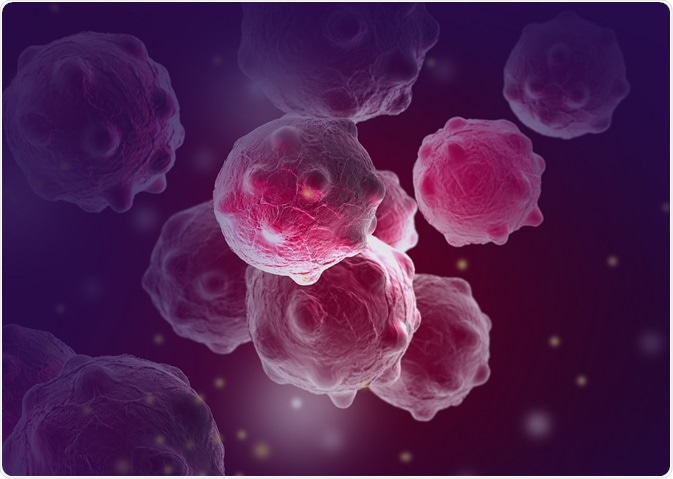Quiescence is a temporary cell cycle state where populations of cells rest and do not replicate, before they are activated and re-enter the cell cycle.
 Credit: jovan vitanovski/Shutterstock.com
Credit: jovan vitanovski/Shutterstock.com
Entering and exiting the cell cycle
The cell cycle is highly organised and divided into four phases (G1, S, G2 and M). Checkpoints are used to ensure that the important events of each stage are carried out before a cell can move onto the next phase. For example, for a cell to pass from G1 to S phase, it must bypass the G1 checkpoint. Once past this point, they are committed to replicating. Alternatively, at this point, cells can exit the cell cycle into a phase called Gap 0 (G0) phase.
Cells within the G0 phase are non-replicating and can either be there temporarily (quiescence) or permanently due to aging or deterioration (senescence). This state is very important in the maintenance of viable populations of stem cells. Each cell has a limited number of replications that it can undergo, called the Hayflick limit. Therefore, if all cells continually re-enter the cycle straight after replicating, the number of stem cells and the lifespan of the organism would be reduced.
What are stem cells?
Stem cells are undifferentiated cells that can mature into many different types of adult cell. They are used to maintain and replenish tissues, such as the lining of the intestine.
In comparison to embryonic stem cells, which are constantly replicating, adult stem cells are mostly in quiescence. For example, only 0.02% of foetal hemopoietic stem cells (HSC) are quiescent, whereas over 90% of adult HSCs are. It is very important that an organism maintains a viable source of HSC. If there is a large loss of blood then HSC can leave the G0 phase and replicate quickly to produce many new blood cells.
How is quiescence maintained in adult stem cells?
Quiescence in adult stem cells is maintained by cyclin dependent kinase inhibitors and Rb. At the G1 checkpoint, mitogens lead to cyclin D expression which activates cyclin dependent kinases (CDKs) and inactivates Rb.
Embryonic stem cells have high levels of cyclins A, D and E, meaning that CDKs are constitutively active and Rb is hyper-phosphorylated, so cells bypass the G1 restriction point and can continue to replicate.
Adult stem cells, however, have cyclin dependent kinase inhibitors (CDKI) and Rb which maintains the restriction point and enable cells to exit the cell cycle. Once in the G0 phase, they remain in quiescence until mitogenic signalling is sufficient for the cells to re-enter.
Hemopoietic cells in quiescence
Hemopoietic cells are kept dormant for long periods of time to maintain HSC stores. The presence of Thrombopoietin and TGF-β leads to enhanced p57 expression, which functions as a CDKI. This inhibitor binds to cyclin D, preventing it from entering the nucleus and meaning that CDK4 and CDK6 cannot be activated. Therefore, Rb is not phosphorylated and E2F mediated transcription is prevented. This ensures that the HSCs cannot bypass the restriction point and are maintained in G0.
Therefore, quiescence is a rest state in which cells do not replicate. It is very important in the maintenance of stem cell populations, loss of which can result in premature aging.
Further Reading